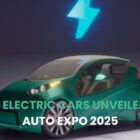The government has been promoting electric vehicles in the country to curb pollution and promote greenery. However, people are skeptical about using electric vehicles due to diverse reasons. They are concerned about charging their cars while traveling long distances. EV charging infrastructure is developing. The country must achieve the set EV30@30 vision. By 2030, EVs should be part of thirty percent of new car vehicle registrations.
Requirements
The country requires thirty-nine lakh semi-public and public charging stations to cater to this growing demand. The global average ratio is one station for twenty vehicles. This ratio is higher than the current ratio of one station per one hundred and thirty-five vehicles. The central government has implemented multiple incentives and policies to promote EV charging infrastructure.
Measures taken
Range anxiety is a primary deterrent against electric vehicle adoption. Hence, the government has taken several measures to develop a robust charging network. It allows convenient and quick charging and supports EV adoption. EV charging stations are set up under flagship policies, like FAME. It boosts E V charging growth. The other initiative taken is NEMMP to boost EV purchases.
Private and government collaboration
A vast network is required. Hence, the government has asked private companies and investors to join the revolution. SMBs, RWA (Residential Welfare Associations), charging providers, and EV automakers are contributing their bit to develop charging infrastructure. Smart charging and battery swapping are convenient and affordable for potential owners.
Factors that hinder EV infrastructure development in the country
Lack of Infrastructure to support public charging
By 2030, the BEE (Energy Efficiency Bureau) expects to set up approximately 46,397 public stations across nine cities. Currently, there are only 5,234 stations spread around the country. This is due to a lack of awareness concerning the benefits and high EV station installation costs. Besides this, many small businesses and RWAs are reluctant to invest in such infrastructure.
Inadequate power grid
Power is increasing in demand throughout the country. The power grid is already under strain. An increasing number of electric vehicles will only strain the grid and cause frequent power cuts. Rural areas and small towns are vulnerable to power cuts. People might lose confidence in the vehicle’s recharging capabilities and stop switching to EVs. Such situations discourage private investors from refraining from making investments in EV charging stations in India
Geographical diversity
India is a vast country and is known for its geographical diversity. Hence, installing EV stations, especially in different terrains, is challenging. For example, areas that experience high rainfall require water-resistant infrastructure. Besides this, differing travel patterns and population densities make charging station installation and maintenance in rural and remote regions difficult and expensive. The government is taking adequate steps to address such challenges. The objective is to create an efficient and sustainable EV charging network.
Viable solutions
- Integrate renewable energy: Favorable wind patterns, flowing rivers, and ample sunshine in the country create opportunities to promote renewable energy. By 2030, renewable energy generation is expected to increase to 500 GW. It represents half of the country’s total energy needs. This increase, if realized, can help provide uninterrupted power to charge EVs and reduce pollution.
- Increase infrastructure to support public charging: The heavy Industries Ministry has recently sanctioned the construction of 2,877 charging stations in different states. Besides this, 1,576 stations are to be set up across nine expressways and 16 highways to cover approximately 10,275km. EESL Ministry is encouraging private investors to construct 810 public EV charging stations.
- Boost private sector investment: Government incentives boost private sector investment in EV infrastructure. Oil companies, for example, are provided with Rs. 800 crore under the FAME Scheme to develop charging stations. 100% FDI in EV infrastructure will encourage growth.
- Develop fast-charging technology: Fast charging points take less time to charge a vehicle, unlike slow chargers, which take approximately 1-5 hours. It helps alleviate range anxiety among long-distance travelers. The government offers subsidized fast-charging infrastructure installation facilities while private companies invest in developing improved fast-charging technology.
Impact of developing EV infrastructure on India’s future
Increased renewable energy usage
Power Ministry had implemented the 2022 Open Access Rules that enabled owners to contact producers to buy green energy without third-party intervention. This move helped boost renewable energy and EV charging infrastructure.
Reduced greenhouse gas emissions
Increasing EVs on Indian roads can help reduce a significant amount of greenhouse gas emissions. They can convert sixty percent of grid-based electrical energy compared to 17-21 percent of fuel conversion by fossil fuel-based vehicles. Reduced GHG emissions help enhance air quality, boost public health, and reduce healthcare expenses.
Economic growth
Switching to renewable energy sources and EVs can help reduce the country’s dependence on fossil fuel imports. The government can use the saved money to create new job opportunities and promote self-sustainment. By 2030, the EV industry can create fifty million indirect and ten million direct jobs. Thus, the objective is all set to achieve a $10 trillion economy.



